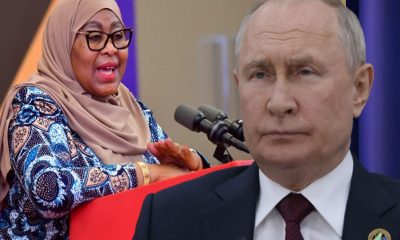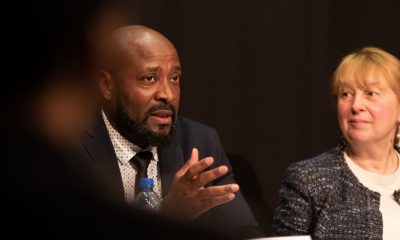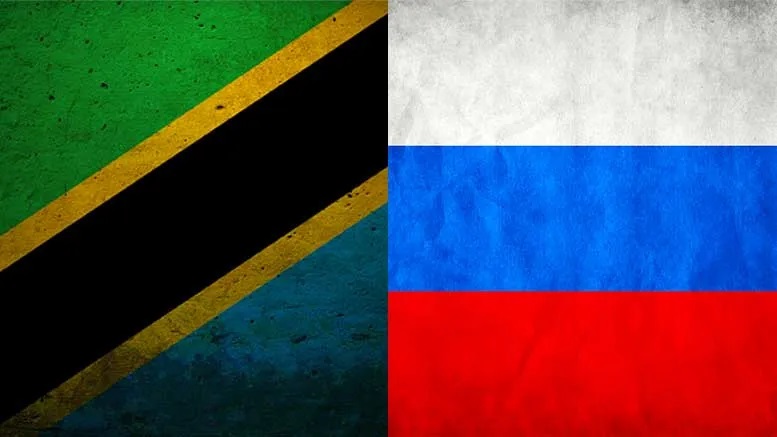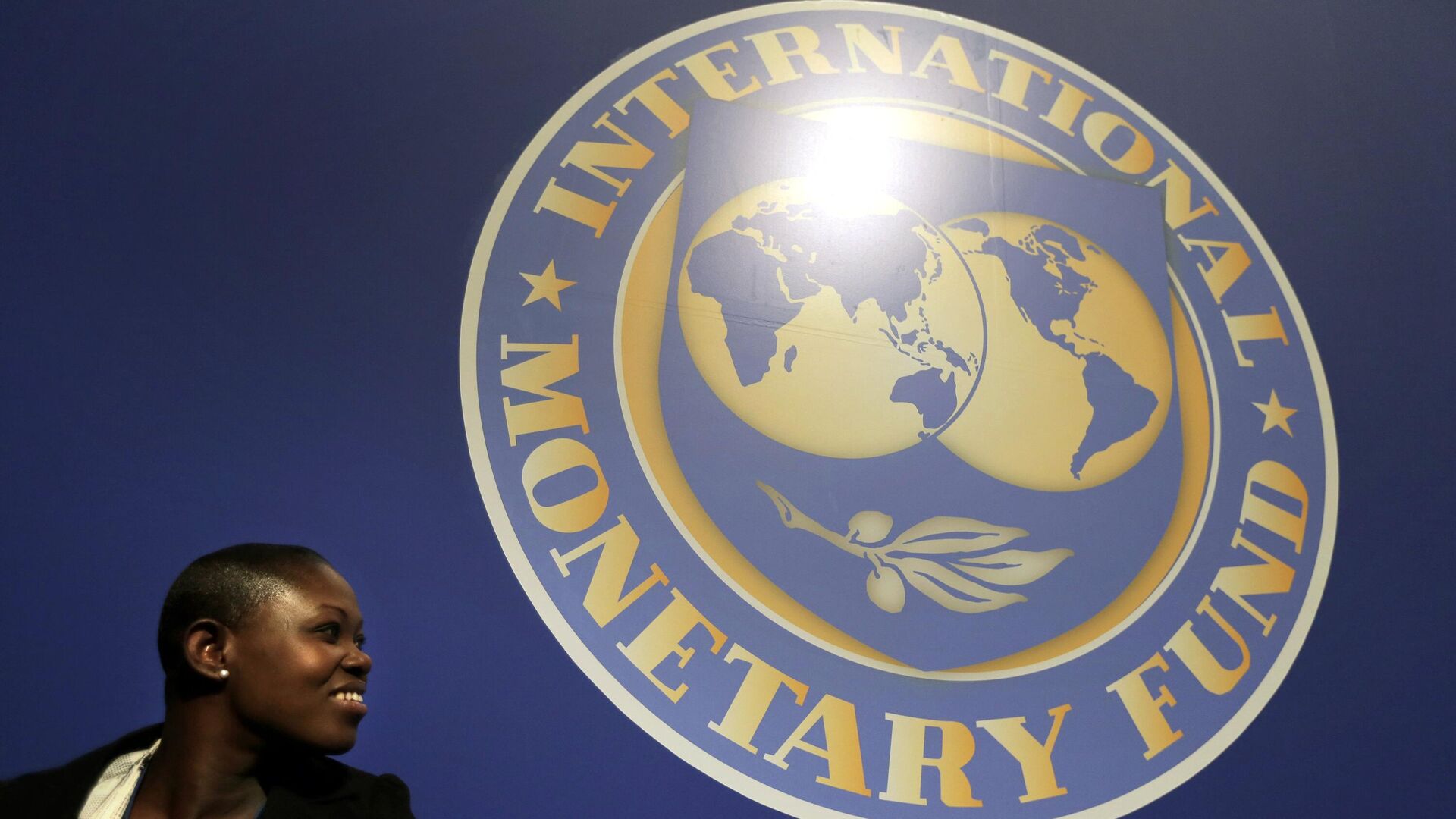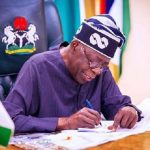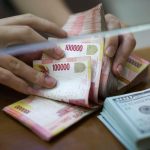Economy
Russia Scrambles for Higher Performance Marks in Africa
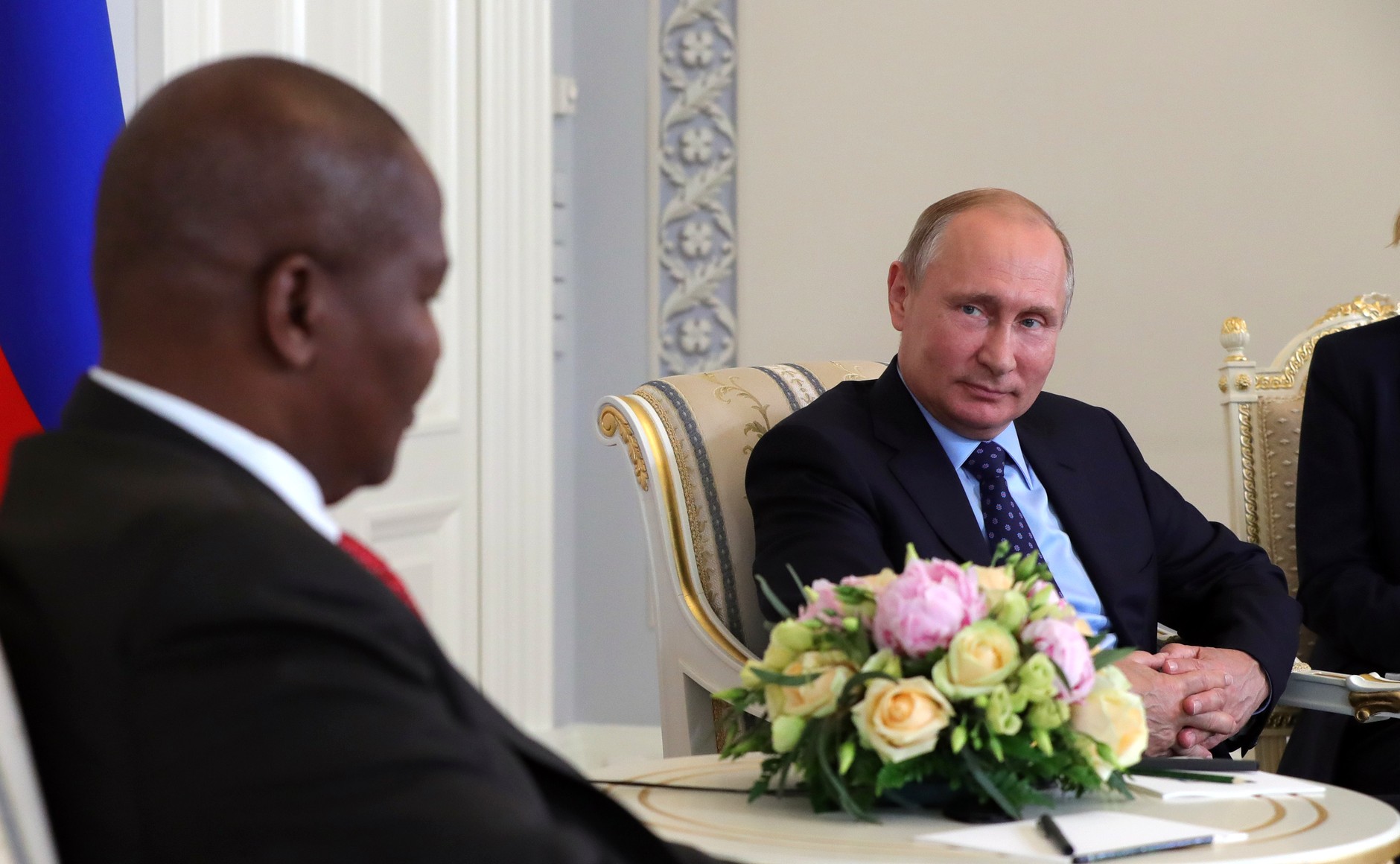
By Kestér Kenn Klomegâh
Squeezed between Western and European sanctions due to its “special military operation” in Ukraine since late February and its dilapidating effects on Africa’s economy on one side and its decades-old desire to regain a part of the Soviet-era influence despite the weak economic presence and negative perceptions at the core among the public especially the youth and middle class, Russia is gearing up for the next traditional African leaders summit.
With preparations underway, Russia would have to begin preparing for and play different attractive rhythms at the second African leader’s summit in 2023 in St. Petersburg, Russia. Reports monitored by the author indicate that the modest economic gains are gradually eroding due to Covid-19 these past two years and the situation is turning complicated currently due to the Russia-Ukraine crisis.
The Russia-Ukraine crisis has had a strong immeasurable negative impact, generating social discontent across a large spectrum of the population in Africa. Therefore, African leaders would indiscriminately have to cooperate with any foreign investors willing to invest and support their development process. Across Africa, more than 282 million people are food insecure – and that number is rising, according to estimates by the World Bank.
Throughout Africa, the vulnerable groups of the population are displaying discontent and dissatisfaction due to unbearable rising prices for commodities and consumables. This latest food crisis, which did not originate in the continent, is reaching alarming dimensions, especially in Africa. In fact, African leaders are confronted with these hurdles and emerging challenges. They are feverishly looking for both short-term solutions to calm down existing tensions among the people, and also long-term strategies to push sustainable development and make pace for growth.
The United States perceives most of the challenges and opportunities with a difference in Africa. It is constantly investing and its private investors are active exploring the continent. The United States is well-connected with its public outreach diplomacy. American institutions and organizations are linking up with the youth, women and civil society.
After a peak in 2014, foreign direct investment (FDI) in Africa from the United States dropped to $47.5 billion in 2020. During the pandemic, it provided more than 50 million doses to 43 African countries. It has further given more than $1.9 billion in Covid-related assistance, for urgent needs like emergency food and other humanitarian support.
President Joe Biden has launched the Emergency Plan for Adaptation and Resilience. The year, the Congress allocated $3 billion every year by 2024 to finance climate adaptation projects, the largest commitment ever made by the United States to reduce the impact of climate change on those most endangered by it.
Through the Power Africa programme, the U.S. has connected more than 25 million homes and businesses across the continent to electricity, 80 per cent of which is based on renewables. Development Finance Corporation supports renewable energy across Africa, including a solar project in Nigeria, and wind farms in Senegal and Kenya. Nigeria marked a new chapter with the signing of a $2.1 billion development assistance agreement that supports collaboration in the fundamentals: health, education, agriculture, and good governance.
And then four U.S. companies are collaborating with the Senegalese Government on infrastructure projects; that’s the Institut Pasteur de Dakar, which is working toward COVID vaccine production with American support and investment; and pushing innovation, technology and entrepreneurship with women and youth groups in Africa. The popular partnership between the United States and Africa is YALI – the Young African Leaders Initiative.
The Prosper Africa initiative aims to increase two-way trade and investment. The Africa Growth and Opportunity Act – known as AGOA – provides duty-free access to American markets, and most African countries have taken full advantage of it. U.S. investors are seriously leveraging the African Continental Free Trade Area (AfCFTA). Similarly, China, Japan and South Korea have started localizing the production of automobiles and tech gadgets.
Despite some criticism, international development institutions and organizations are ready and offering support. In addition, external countries are stepping up efforts in that direction. The World Bank stands ready. Its latest three-year, $93 billion global programme – about 2/3 of which will support Africa’s development agenda – is delivered through the International Development Association (IDA). The IDA is the world’s largest source of concessional funds, including grants for low-income countries, helping them seize opportunities to reduce poverty and stimulate inclusive growth.
This latest IDA replenishment will support Africa to increase even more in the years ahead. Africa has become the prime region benefiting from IDA resources – growing more than tenfold from its annual program of about $3 billion in 2000 to well over $30 billion currently. This support, plus our growing on-the-ground presence across Africa, is enabling to work hand-in-hand with governments, the private sector, and civil society to implement the continent’s ambitious development agenda.
While in Dakar, capital of Senegal, meeting more than a dozen Heads of State from across Africa, Axel van Trotsenburg, World Bank Vice President for Latin America and the Caribbean, said: “African leaders have, through the African Union process, articulated clear goals – from digitalization to electricity to education – and we are committed to helping Africa translate these ambitions into strong programmes that can, within a short period of time, improve people’s lives and transform the continent.”
Foreign countries including the United States, European Union, and Asian states such as China, and the Gulf and Arab states are, indeed, at the forefront in Africa. They offer all kinds of support for investments and credit lines for infrastructure projects and development programmes, while Russia seems ultra-hesitant to do. In March during the heat of the Russia-Ukraine crisis, the United States and European Union supported Africa through the African Development Bank (AfDB), when the bank sought funds of more than $50 billion for curated bankable projects in key priority sectors identified in the Africa Investment Forum’s 2020 Unified Response to Covid-19 initiative.
According to the China-Africa Economic and Trade Relationship Annual Report (2021), while Covid-19 has shaken the global economy, Chinese investment in Africa has been climbing. The report says China invested US$2.96 billion in Africa in 2020, up 9.5% from 2019. The turnover of Chinese enterprises’ contracted projects in Africa amounted to $383.3 billion in 2020, which is a 16.7% drop from 2019.
In a media release, the U.S. Government’s lead development agency, the United States Agency for International Development (USAID), has renewed its partnership with many African countries. Quite recently, it offered to fund various projects, including investment in health and education, women and youth, and infrastructures in a number of African countries. For instance, in April this year, it gave assistance funding of $1.5 billion to promote a more peaceful, prosperous and healthy Mozambique.
The economic significance of the Eurasian Union for Africa’s development here need not be over-discussed. Members of the European Union such as Britain, France, Germany and The Netherlands are playing visible roles in Africa. The European Union, as a substantial economic power bloc, has long-term working relations with African Union.
With its new Global Gateway Strategy, the EU is demonstrating the readiness to support massive infrastructural investment in Africa. It also seeks to unlock new business and investment opportunities, including in the areas of manufacturing and agro-processing as well as regional and continental value chain development. A document entitled “Toward a Comprehensive Strategy with Africa” sets forth the template of what the EU plans to do with Africa.
Valdis Dombrovskis, Executive Vice-President and Commissioner at the EU Secretariat pointed out that “In this new approach towards Africa, we can build a modern, sustainable and mutually rewarding partnership of equals. Of course, there will be challenges along the way but the EU stands ready to help. We want to share the lessons from our own process of economic integration, and with our new Global Gateway Strategy. We have demonstrated that we are ready to support massive infrastructural investment in Africa.”
That said, African leaders are exploring available possibilities and windows that have been opened after the last EU-Africa summit. The European Union has unveiled a €300 billion ($340 billion) alternative to China’s Belt and Road initiative – and investment programme the bloc claims will create links, no dependencies.
There is a great rivalry and keen competition among key global players now. And Africa is now seen from different perspectives, but more importantly, it has been described as the last investment frontier due to the current transformations taking place there. During the 35th Assembly of the Heads of State and Government of the AU in Addis Ababa in February, António Guterres argued that Africa was “a source of hope” for the world.
In November 2021, a report prepared by 25 Russian policy experts, titled ‘Situation Analytical Report’ explicitly noted that many external countries are using diplomacy in all ways to support their efforts in Africa. It criticized the inconsistency of Russia’s current policy towards Africa. The intensification of political contacts is only with a focus on making them demonstrative. Russia’s foreign policy strategy regarding Africa needs to spell out and incorporate the development needs of African countries.
While the number of high-level meetings has increased, the share of substantive issues on the agenda remains small. There are few definitive results from such high-level meetings. Many bilateral agreements largely remain not implemented, and many pledges are undelivered. It pointed to a lack of coordination among various state and para-state institutions working with Africa. According to the report, Russia has to intensify and redefine its parameters as it has now transcended to the fifth stage in its relationship with Africa.
That report was also critical of public speaking. The report lists insufficient and disorganized Russian-African lobbying, combined with the lack of “information hygiene” at all levels of public speaking among the main flaws of Russia’s current Africa policy. In several ways, ideas and intentions are often passed for results, and worse Russia’s possibilities are overestimated both publicly and in closed negotiations.
Several reports monitored by this author shows clearly that there has been little approach, in terms of government and institutional public relations, to Russia’s foreign policy in Africa. Understandably, after thirty years most of its institutions connecting Africa are still in transitional mode from the Soviet era. This author has written a lot about this, emphasizing the seriousness of using media networks – a calculated attempt to build an atmosphere of trust and confidence. Quite obviously, Russians have to devote a great deal of thought to creating a strategic communication group that could highlight its diverse performance and practical genuine interests in Africa.
Opening a new stage of relations becomes important, especially when analyzing the contradictions and confrontations posed by the Russia-Ukraine crisis and its multiple effects on future relations. Without doubts, African leaders complained bitterly that they have become direct victims of the Russia-Ukraine crisis. Overall Russia’s investment in economic sectors is still staggering there in the continent and comparatively, the fact still remains that the United States, the European Union and a number of Asian and the Gulf States are investing heavily in Africa.
Russia’s Foreign Minister Sergey Lavrov and his Deputy Mikhail Bogdanov, most often show their crosshair of consistent criticism for Western and European dominance and investment in Africa. It lacks strategies for implementing those oftentimes forward-looking policies for Africa. The passion for repeating the same things in different ways in speeches. In a general sense, their repetitive theme of Soviet-era support for political liberation and now efforts to help Africa fight neocolonialism are highly appreciated but Russia has to, in practical terms, show its latest policy achievements in various sectors for the past two decades.
On another side note, Russia most probably needs to design the template of its communication strategy ahead of the 2023 summit, which has to largely win the hearts of African leaders to the emerging New World Order. As already promised, the Minister of Foreign Affairs of the Russian Federation, Sergey Lavrov, indicated in a mid-June message that “in these difficult and crucial times the strategic partnership with Africa has become a priority of Russia’s foreign policy. The signed agreements and the results will be consolidated at the forthcoming second Russia-Africa summit.”
Economy
NBA Demands Suspension of Controversial Tax Laws
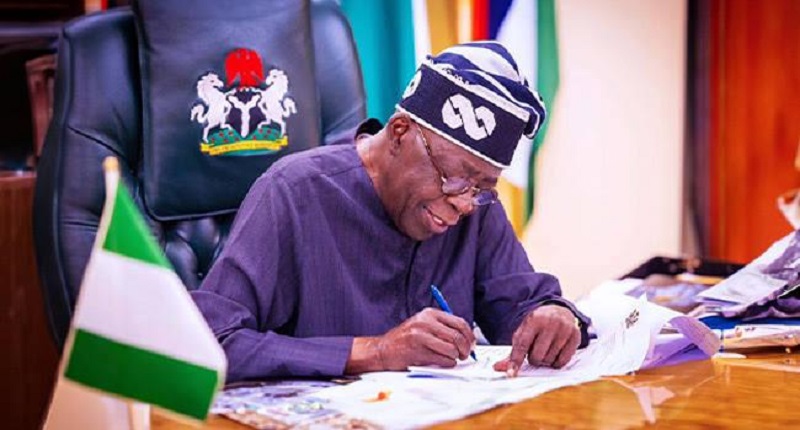
By Modupe Gbadeyanka
The federal government has been asked by the Nigerian Bar Association (NBA) to suspend the implementation of the controversial tax laws.
In a reaction to the tax reform acts, the president of the group, Mr Afam Osigwe (SAN), the suspension of the laws would allow for a proper investigation into allegations of alterations in the gazetted and harmonised copies.
A member of the House of Representatives, Mr Abdussamad Dasuki, alleged that some parts of the laws passed by the parliament were different from the gazetted copy.
To address the issues raised, the NBA said it is “imperative that a comprehensive, open, and transparent investigation be conducted to clarify the circumstances surrounding the enactment of the laws and to restore public confidence in the legislative process.”
“Until these issues are fully examined and resolved, all plans for the implementation of the Tax Reform Acts should be immediately suspended,” the association declared.
It noted that the controversies “raise grave concerns about the integrity, transparency, and credibility of Nigeria’s legislative process.”
“These developments strike at the very heart of constitutional governance and call into question the procedural sanctity that must attend lawmaking in a democratic society,” it noted.
“Legal and policy uncertainty of this magnitude has far-reaching consequences. It unsettles the business environment, erodes investor confidence, and creates unpredictability for individuals, businesses, and institutions required to comply with the law. Such uncertainty is inimical to economic stability and should have no place in a system governed by the rule of law.
“Nigeria’s constitutional democracy demands that laws, especially those with profound economic and social implications, emerge from processes that are transparent, accountable, and beyond reproach. Anything short of this undermines public trust and weakens the foundation upon which lawful governance rests.
“We therefore call on all relevant authorities to act swiftly and responsibly in addressing this controversy, in the overriding interest of constitutional order, economic stability, and the preservation of the rule of law,” the organisation stated.
Economy
MRS Oil, Two Others Raise NASD Bourse Higher by 0.52%

By Adedapo Adesanya
Demand for hot stocks, including MRS Oil Plc, buoyed the NASD Over-the-Counter (OTC) Securities Exchange by 0.52 per cent on Tuesday, December 23.
The energy company was one of the three price gainers for the session as it chalked up N19.69 to sell at N216.59 per share versus the previous day’s value of N196.90 per share.
Further, FrieslandCampina Wamco Nigeria Plc gained N2.95 to close at N56.75 per unit versus N53.80 per unit and Golden Capital Plc appreciated by 84 Kobo to N9.29 per share from Monday’s N8.45 per share.
Consequently, the market capitalisation went up by N10.95 billion to N2.125 trillion from N2.125 trillion and the NASD Unlisted Security Index (NSI) rose by 18.31 points to 3,570.37 points from 3,552.06 points.
Yesterday, the NASD bourse recorded a price loser, the Central Securities Clearing System Plc (CSCS), which gave up 17 Kobo to close at N33.70 per unit against the previous trading value of N33.87 per unit.
The volume of securities traded at the session went down by 97.6 per cent to 297,902 units from the previous day’s 12.6 million units, the value of securities decreased by 98.5 per cent to N10.5 million from N713.6 million, and the number of deals remained flat at 32 deals.
By value, Infrastructure Credit Guarantee Company (InfraCredit) Plc ended as the most actively traded stock on a year-to-date basis with 5.8 billion units exchanged for N16.4 billion. This was followed by Okitipupa Plc, which traded 178.9 million units valued at N9.5 billion, and MRS Oil Plc with 36.1 million units worth N4.9 billion.
In terms of volume, also on a year-to-date basis, InfraCredit Plc led the chart with a turnover of 5.8 billion units traded for N16.4 billion. Industrial and General Insurance (IGI) Plc ranked second with 1.2 billion units sold for N420.7 million, while Impresit Bakolori Plc followed with the sale of 536.9 million units valued at N524.9 million.
Economy
NGX All-Share Index Soars to 153,354.13 points
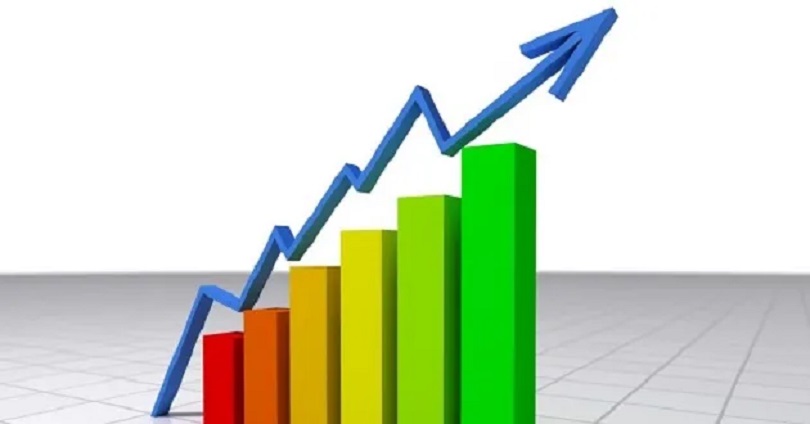
By Dipo Olowookere
It was another bullish trading session for the Nigerian Exchange (NGX) Limited as it closed higher by 0.59 per cent on Tuesday.
The market further rallied due to continued interest in large and mid-cap stocks on the exchange by investors rebalancing their portfolios for the year-end.
Yesterday, Aluminium Extrusion sustained its upward trajectory after it further appreciated by 9.96 per cent to N14.90, as Austin Laz gained 9.81 per cent to close at N2.91, Custodian Investment improved by 9.69 per cent to N38.50, and First Holdco soared by 9.35 per cent to N50.30.
Conversely, Royal Exchange declined by 7.22 per cent to N1.80, Champion Breweries shrank by 6.57 per cent to N15.65, NASCON lost 5.36 per cent to trade at N105.05, Sovereign Trust Insurance depreciated by 5.28 per cent to N3.77, and Japaul went down by 4.51 per cent to N2.33.
At the close of business, 29 shares ended on the gainers’ table and 27 shares finished on the losers’ log, representing a positive market breadth index and bullish investor sentiment.
This raised the All-Share Index (ASI) by 895.06 points to 153,354.13 points from 152,459.07 points and lifted the market capitalisation by N579 billion to N97.772 trillion from the previous day’s N97.193 trillion.
VFD Group finished the day as the busiest stock after it recorded a turnover of 192.0 million units worth N2.1 billion, GTCO exchanged 63.5 million units valued at N5.6 billion, Access Holdings traded 49.8 million units for N1.0 billion, First Holdco sold 45.8 million units valued at N2.3 billion, and Secure Electronic Technology transacted 38.3 million units worth N28.4 million.
In all, market participants bought and sold 677.4 million units valued at N20.8 billion in 27,589 deals compared with the 451.5 million units worth N13.0 billion traded in 33,327 deals on Monday, showing an improvement in the trading volume and value by 50.03 per cent and 60.00 per cent apiece, and a shortfall in the number of deals by 17.22 per cent.
-

 Feature/OPED6 years ago
Feature/OPED6 years agoDavos was Different this year
-
Travel/Tourism9 years ago
Lagos Seals Western Lodge Hotel In Ikorodu
-

 Showbiz3 years ago
Showbiz3 years agoEstranged Lover Releases Videos of Empress Njamah Bathing
-

 Banking8 years ago
Banking8 years agoSort Codes of GTBank Branches in Nigeria
-

 Economy3 years ago
Economy3 years agoSubsidy Removal: CNG at N130 Per Litre Cheaper Than Petrol—IPMAN
-

 Banking3 years ago
Banking3 years agoFirst Bank Announces Planned Downtime
-

 Banking3 years ago
Banking3 years agoSort Codes of UBA Branches in Nigeria
-

 Sports3 years ago
Sports3 years agoHighest Paid Nigerian Footballer – How Much Do Nigerian Footballers Earn



